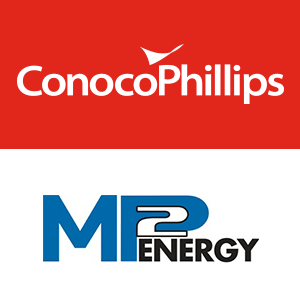
2015-16 Energy Institute Fellows
The Texas A&M Energy Institute is proud to announce the naming of the 2015-16 Energy Institute Fellows, specifically the 2015-16 ConocoPhillips Energy Institute Fellows and the 2015-16 MP2 Energy Institute Fellow, funded through the generous contributions of ConocoPhillips and MP2 Energy. These fellowships aim to reward excellence in energy research, promote future research that is important to our energy future, and encourage students to pursue careers in energy.
The Texas A&M Energy Institute Graduate Fellowships Funded by ConocoPhillips recognize outstanding energy research work performed by Ph.D. students under the supervision of affiliated faculty members of the Texas A&M Energy Institute. The Texas A&M Energy Institute Graduate Fellowship Funded by MP2 Energy recognizes an outstanding student who is doing research in renewable power, power transmission and generation, power markets, commodity trading, demand response, efficiency or energy policy.
Each graduate fellowship consists of a $5,000 stipend and becomes effective for one year beginning on September 1, 2015. All full-time doctoral students who perform energy research and whose primary advisor is an affiliated faculty member of the Texas A&M Energy Institute are eligible.
A total of 63 applications were submitted from 13 departments within five colleges for the fellowships funded by ConocoPhillips, and 34 applications were submitted from 10 departments within two colleges for the fellowship funded by MP2 Energy.
2015-16 ConocoPhillips Energy Institute Fellows

Masoud Alfi
Department: PETE
Advisor: Maria A. Barrufet
Department: PETE, CHEN
Improving our knowledge of hydrocarbon transfer and storage in shale
As part of my research, I have been working on simulating different aspects of heat and mass transfer in ultra-low permeability shale reservoirs. This is achieved by proposing a state-of-the-art multiple porosity approach with the objectives of decomposing shale matrix into different porosity systems of distinctive hydraulic and transport properties and applying appropriate physics to capture the complicated nature of oil and gas production in such reservoirs. The proposed model provides a more realistic picture of the production mechanisms, leading to a more reliable prediction of the reservoir behavior.

Chien-Fan Chen
Department: MEEN
Advisor: Partha Mukherjee
Department: MEEN
Addressing Electrode Degradation and Microstructure Effect in Energy Storage
In recent years, lithium batteries, such as lithium-ion and lithium-sulfur batteries are leading the race towards meeting the energy and power requirements for the next generation of hybrid and electric vehicles. The majority of the research has focused on the performance improvement and degradation analysis of lithium batteries. Since the electrode microstructure affects the electrode properties, such as effective ionic conductivity and solid-phase diffusion, the cell performance and degradation phenomena (e.g. formation microcrack and solid electrolyte interphase) vary with the microstructure design. The objective of this research is to develop a microstructure-aware electrochemical model to conduct a fundament study of microstructural effects on cell performance and degradation. The influence of microstructure was observed from the cell performance and electrochemical impedance spectroscopy (EIS).

Dean Ellis
Department: AERO
Advisor: Adonios Karpetis
Department: AERO
Laser diagnostics for high-speed combustion and energy efficiency in extreme environments
A novel laser diagnostic technique is being utilized to measure the thermochemistry of non-isobaric flows. Vibrational Raman scattering is being used to measure density and composition of major species, (CO2, O2, CO, N2, CH4, h4O, and h4) while rotational Raman scattering is being used to measure temperature. The independent measurements of density and temperature are allowing for the determination of pressure. This line imaging technique is being applied to flows with very high strain rates and Reynolds numbers emanating from a miniaturized combustor. Current work involves transitioning the miniaturized burner into a Moderate or Intense Low-oxygen Dilution (MILD) type of combustion in order to increase the burning efficiency.

Ahad Esmaeilian
Department: ECEN
Advisor: Mladen Kezunovic
Department: ECEN
Preventing Major Blackouts in Smart Electricity Grid Using Wide Area Synchrophasor Measurements
Power system blackout is a fairly complicated phenomenon with a very low expectation of occurrence, but potentially devastating social and economic impacts. Studies have revealed that a series of cascading events, such as transmission line outages and malfunctions of protective relays have been among the main reasons of recent blackouts. My research is focused on the development of a wide area synchrophasor-based protection and control scheme to predict and mitigate cascade event outages to prevent major blackouts. Due to operation based on synchronized data from different part of system, the proposed method grasps better understanding of power grid behavior, such as stability margin, load change pattern, and generation reserve margin.

Brett A. Miller
Department: TAMU-LAW
Advisor: Gina S. Warren
Department: TAMU-LAW
Regulatory Implications of Renewable Energy’s Copper-Dependence: Can the Renewable Sector Borrow Lessons in Corporate Sustainability from the Global Petroleum Industry by Embracing the Energy-Environment Contradiction to Seize a Competitive Economic Advantage?
“Renewable” refers to the energy source being converted into electricity, not the significant quantities of raw materials—such as copper—required to implement and maintain the infrastructure performing the actual conversion. As the capacity for renewables increase, so too will the global demand for copper production. Unable to effectively regulate the relationship between copper mining and the renewable sector, the legal ramifications of developing substantial copper deposits, both in the U.S. and Mexico, illustrate the regulatory challenges arising from the energy-environment contradiction. Environmental issues challenge global resource development, constraining business objectives throughout the raw material supply-chain. Nevertheless, petroleum corporations utilize aspects of corporate sustainability to maximize efficiency and profitability—initiatives that could benefit the renewable energy industry and its dependence on copper production

Xinghua Pan
Department: CHEN
Advisor: M. Nazmul Karim
Department: CHEN
State and parameter estimation for fault detection and control
Pipelines are one of the most economical and reliable transportation methods for chemicals. However, catastrophes associated with leaks in pipelines have raised safety concerns. New software-based leak detection methods for natural gas pipelines are being designed. The natural gas pipeline leak detection problem is being tackled by considering the effect of thermal properties, leak detection in a pipeline with time-variant consumer usage, and as well as multiple leaks isolation and location estimation. Also, the practical issues associated with the leak detection such as pump station pressure oscillations and temperature changes are receiving consideration. Unlike the current Real-Time Transient Analysis method that needs extensive instrumentation, a new estimation algorithm is being applied to estimate the effect of thermal properties and eliminate their influence on leak detection without requiring new instrumentation.

Gang Yang
Department: MEEN
Advisor: Choongho Yu
Department: MEEN, MSEN
Designing 3D Nanostructured Carbon Materials for Li-S Batteries and Fuel Cells
In the past two years of Ph.D. research, I have been focusing on energy conversion and storage systems, of which the performances have been greatly improved by multi-dimensional nanostructured carbon materials. In particular, I have developed an easy-scale-up and low-cost method to produce 3D carbon nanotube sponges, which have been successfully used in energy conversion systems such as the proton exchange membrane fuel cells (PEMFC) and microbial fuel cells (MFC). Additionally, I am also working on designing new cathodes and anodes for Li-S batteries which have shown five times higher energy density than traditional Li-ion batteries – by using our carbon nanotube sponge-enabled novel electrodes.

Shuai Yuan
Department: CHEM
Advisor: Hongcai Joe Zhou
Department: CHEM
Metal-Organic Frameworks for Energy Conversion and Storage
MOFs, known as metal-organic frameworks, are a promising class of highly ordered porous materials with potential applications in gas storage, catalysis, and photoelectric devices. However, their practical applications in energy conversion and storage are hampered by their sensitivity to ambient moisture. My research is focused on the synthesis of stable MOFs for energy conversion and storage. It aimed at both the synthetic methodologies of stable MOFs and their clean energy related applications. Ultimately, we expect to commercialize our materials for energy conversion, harvesting, and storage.
2015-16 MP2 Energy Institute Fellow

Kecheng Wang
Department: CHEM
Advisor: Hongcai Joe Zhou
Department: CHEM
Rational design of stable MOFs for carbon capture and methane storage
As an emerging class of novel materials, metal-organic-frameworks (MOFs) have attracted great interest in the last few decades. Their modular nature endows these materials with structural diversity and tunable functionality. My research focus is on exploration of tailor-made MOFs for different energy related applications, including methane storage and CO2 capture. We have synthesized several MOFs with great stability, high performance and comparatively low cost, which make them potentially possible for commercial production and real-world applications.
